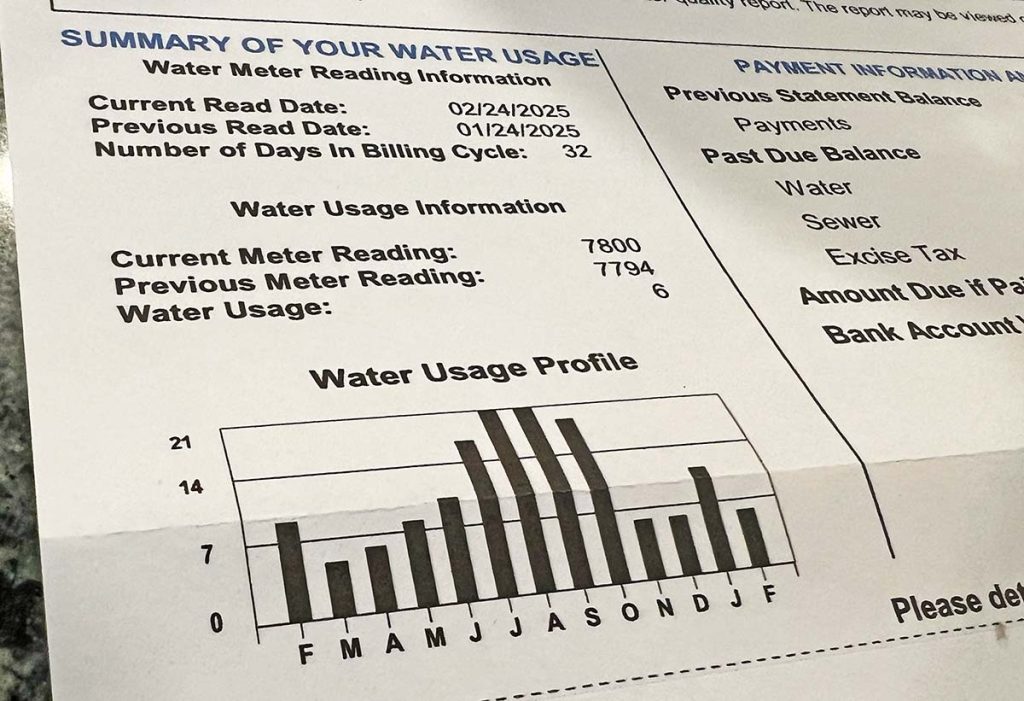Key Takeaways
- Knowing how your water provider measures your usage, whether in gallons or cubic feet, can help you track consumption and identify opportunities to save.
- Monitoring your bill for seasonal changes or unexpected spikes can alert you to potential leaks or excessive water use, helping you address issues quickly.
- Simple actions like fixing leaks, upgrading to water-efficient fixtures, and being mindful of water use can significantly reduce your bill and conserve resources.
Your water bill might seem like a simple monthly expense, but there’s a lot more to it than just a number! By understanding how your usage is measured, the different types of charges, and how to spot potential issues, you can take control of your water costs and even save money.
How Your Water Usage is Measured

Understanding how your water provider measures your usage is the first step in making sense of your bill. Most water utilities use a water meter that tracks the volume of water flowing into your home. The amount you’re billed for is based on these measurements, typically recorded once a month.
- Gallons vs. Cubic Feet: Utilities may measure water in gallons or cubic feet (1 cubic foot = 7.48 gallons). Your bill will indicate which measurement is used.
- Reading your Meter: Utilities either read your meter manually or electronically. If they can’t access the meter, they may estimate your usage based on past consumption.
- Usage Period: Your bill will show the billing cycle dates, usually covering 30 days.
Understanding Your Water Usage Trends

Water usage tends to fluctuate depending on the season, household size, and daily habits. Recognizing these patterns can help you manage your consumption more effectively. Many water utilities will provide a graph of your usage on each bill that can help you identify changes over time.
- Higher Usage in Summer: Activities like watering your lawn, filling your pool, and outdoor cleaning can significantly increase water use.
- Lower Usage in Winter: With less outdoor water use, consumption often drops.
- Unusual Spikes: A sudden increase may indicate leaks, malfunctioning appliances, or higher usage than expected.
Tracking your usage over time can reveal trends and help you adjust your habits to save money.
Types of Water Rate Structures
Your bill’s total cost is influenced by how your utility calculates rates. Understanding the structure of your water rates can help you anticipate changes in your bill and identify opportunities to reduce your costs.
- Flat Rate: Some providers charge a fixed fee per month, regardless of how much water you use.
- Tiered Rates: Others use a tiered system, where the cost per gallon increases as your usage rises, encouraging conservation.
- Seasonal Rates: Utilities in areas with high summer water demand may charge more during peak seasons.
- Fixed & Variable Charges: Most bills include a fixed charge for service and a variable charge based on actual water consumption.
Where Your Water Bill Money Goes
It’s not just about paying for the water you use. Your water bill supports critical infrastructure and services that ensure clean, safe drinking water is delivered to your home. Here’s where that money typically goes:
- Water Treatment & Delivery: Maintaining facilities that treat and deliver water.
- Infrastructure Maintenance: Repairing and replacing aging pipes and pumps.
- Wastewater Management: Safely treating wastewater before it returns to the environment.
- Regulatory Compliance: Meeting health and safety standards set by regulatory agencies.
Identifying Issues on Your Water Bill
If your water bill suddenly spikes, it may be a sign that something isn’t right. Catching and addressing these issues early can prevent further costs.
- Compare to Past Bills: Check your usage against previous months to spot unexpected increases.
- Inspect for Leaks: Leaky faucets, toilets, or irrigation systems can waste thousands of gallons.
- Review the Meter Reading: Confirm that the reading matches your actual water meter.
- Evaluate Household Changes: New appliances, additional guests, or seasonal usage can lead to higher consumption.
Ways to Save on Your Water Bill
Reducing your water usage not only lowers your bill but also helps conserve precious resources. Here are a few simple ways to save:
- Fix Leaks Quickly: Even a small leak can waste hundreds of gallons per month.
- Upgrade to Water-Efficient Fixtures: Install low-flow showerheads, faucets or aerators, and toilets to cut down on usage. Check with your local water utility, as many have free water saving kits available for customers.
- Water Smartly: Water your lawn early in the morning or late in the evening to minimize evaporation.
- Run Full Loads: Maximize the efficiency of your dishwasher and washing machine by running full loads. Make sure it is ENERGY STAR rated to maximize on it’s water and energy efficiency.
- Turn Off the Tap: Save water by turning off the faucet while brushing your teeth or washing dishes.
Learn More: How To Save on Your Water Bill
FAQs About Your Water Bill
Why is my water bill higher than usual?
How is my water bill calculated?
What should I do if I think my water bill is incorrect?
How can I reduce my water bill?
About the Author
David has been an integral part of some of the biggest utility sites on the internet, including InMyArea.com, HighSpeedInternet.com, BroadbandNow.com, and U.S. News. He brings over 15 years of experience writing about, compiling and analyzing utility data.
